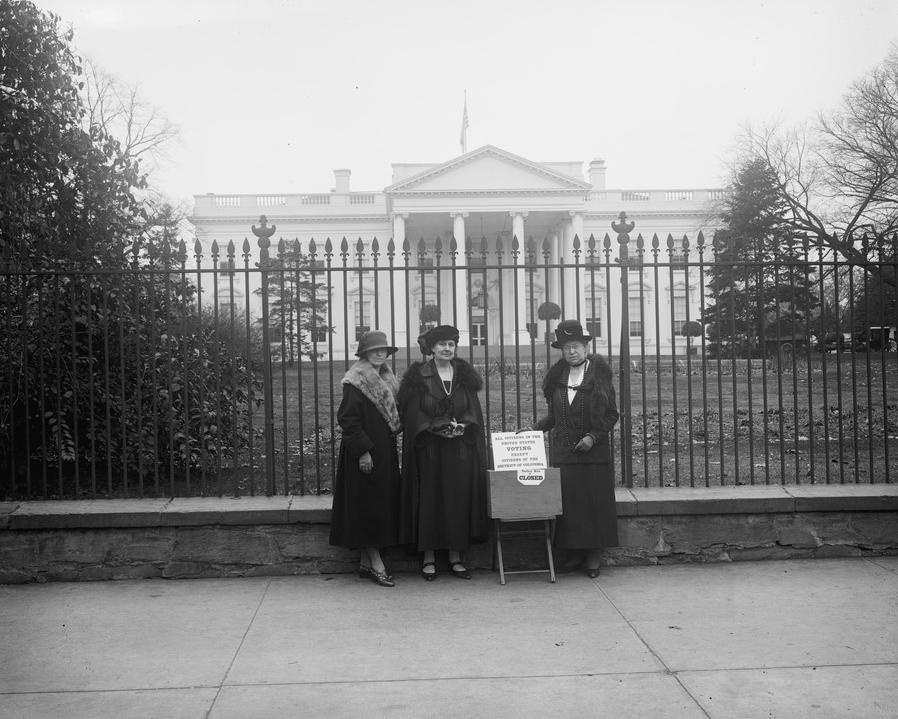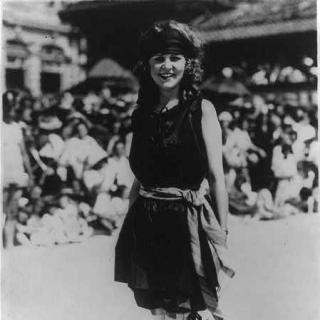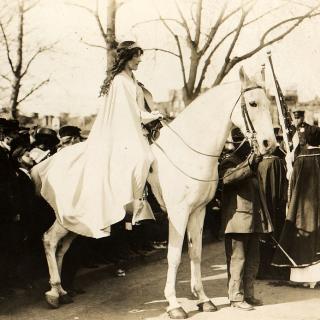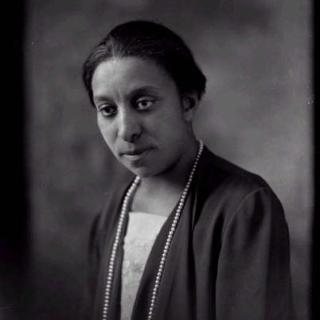The Voteless Voters of Washington, D.C.
On August 18, 1920, the Washington Evening Star carried a headline seen around the nation: “Women of the United States Win the Right to Vote.”[1] After years of protests, demonstrations, and appeals by American women, the fight was finally over. The Nineteenth Amendment, which prohibits the government from denying suffrage on the basis of sex, was officially adopted on August 26, 1920. “The women’s struggle for political ‘freedom’ has been won without bloodshed,” the Women’s Suffrage Association told the Star in a statement, “but only after a hard and bitter campaign extending through three generations.”[2]
But the struggle wasn’t really over.
One-hundred years later, it’s easy for us to look back and celebrate this monumental moment in history as a victory for American women. The efforts of the suffragettes, who endured countless obstacles during their long fight for political equality, should never be ignored. However, their victory was not for all women in the United States. Though they could legally vote, many women still faced obstacles on their way to the polls. Some experienced social intimidation in their communities and at home. Women in minority groups were still systematically barred from voting in many states. Native American women weren’t even considered American citizens until 1924, and so were completely disenfranchised. And, within our hometown, another issue arose: women living in Washington, D.C. couldn’t vote in any kind of election.
In 1920, the District had extraordinarily little political power. Though considered a territory for much of the nineteenth century, it still had no voting representation in Congress. It had no votes in the electoral college. No local government existed, either—instead, a presidentially-appointed council oversaw the city’s affairs. Safe to say, Washingtonians weren’t pleased by their inability to participate in politics. One District resident, in a 1900 letter to the Washington Post editor, complained that “every obligation of citizenship to the government of the United States is strictly enforced against the people of the District, [but] they are denied the right of representation in the body which governs them.”[3] Invoking the mantra of the American Revolution, many complained of “taxation without representation,” a phrase which is still on our lips today. And after the adoption of the Nineteenth Amendment, no one complained more loudly than the women.
Suddenly granted these new rights, women of the District found no way to exercise them. Even worse, the many protests and marches they hosted throughout the women’s suffrage movement — including months of picketing in front of the White House — didn’t really have any direct impact on their lives. Fortunately, the irony and injustice weren’t lost on the Women’s Suffrage Association, which became the League of Women Voters in 1920. Even though Washingtonians couldn’t vote, the League announced the creation of a regional chapter in the District—the hope was that a local group could more easily work towards the enfranchisement of the city. “The fact that the District League members do not have a vote does not interfere with their ability to work with and for the National League,” they assured the Star.[4] The D.C. chapter was officially founded on May 26, 1921. For the women of Washington, this was the beginning of the real fight.
Almost immediately, the National League of Women Voters of the District of Columbia advocated for their city’s voting rights. They weren’t afraid to point out the irony of their situation, either, and even gave themselves an appropriate nickname. “Our position in a large national organization is unique,” a spokeswoman once told the House of Representatives, “and it accounts for our contradictory name—the Voteless League of Women Voters.”[5]
In the 1930s, when Congress hosted a series of hearings regarding the District’s representation and suffrage, the Voteless League were active and enthusiastic participants. Their spokeswoman made their platform quite clear in her opening statement:
“The Voteless League of Women Voters subscribes to the arguments already made at this hearing on behalf of suffrage for the District. We do this, first, because we believe in the fundamental and basic principles of democracy and, second, because in all our work, we have felt the handicap we suffer on account of our political impotence.”[6]
As we know, the efforts of the League were eventually successful. Washingtonians voted in their first Presidential election in 1964. In the 1970s, the District gained a popularly-elected mayor and local council, as well as a non-voting member of Congress—the local government as we know it today. Finally, the women of Washington could exercise their hard-earned, Constitutional right to vote. But even today, one-hundred years later, the League still works to gain even more voting rights for their city.
So as we celebrate the Nineteenth Amendment’s centennial year, those of us in D.C. should also remember the women whose victory wasn’t assured in 1920. Our local story really isn’t about the large demonstrations down the Mall, or the women who protested outside the White House—the suffragettes of Washington were the Voteless Voters, who continued to fight long after the Amendment was ratified.
Footnotes
- ^ “Women of the United States Win the Right to Vote, as Tennessee Ratifies Suffrage Amendment,” The Washington Evening Star, August 18, 1920, 1.
- ^ “Women of the United States Win the Right to Vote,” The Washington Evening Star, August 18, 1920, 2.
- ^ Burke Linthall, “Representation in the District: Taxation without the Right to a Voice in Affairs Not Constitutional,” The Washington Post, March 20, 1900.
- ^ “Issue Election Call: League of Women Voters to Meet with Mrs. Pinchot,” The Washington Evening Star, May 19, 1921.
- ^ Hearings Before the Committee on the Judiciary House of Representatives: National Representation and Suffrage for the Residents of the District of Columbia (Washington, D.C.: U.S. Government Printing Office, 1938), 112.
- ^ Ibid.






![Sketch of the mythical fuan by Pearson Scott Foresman. [Source: Wikipedia]](/sites/default/files/styles/crop_320x320/public/2023-10/Goatman_Wikipedia_Faun_2_%28PSF%29.png?h=64a074ff&itok=C9Qh-PE1)












